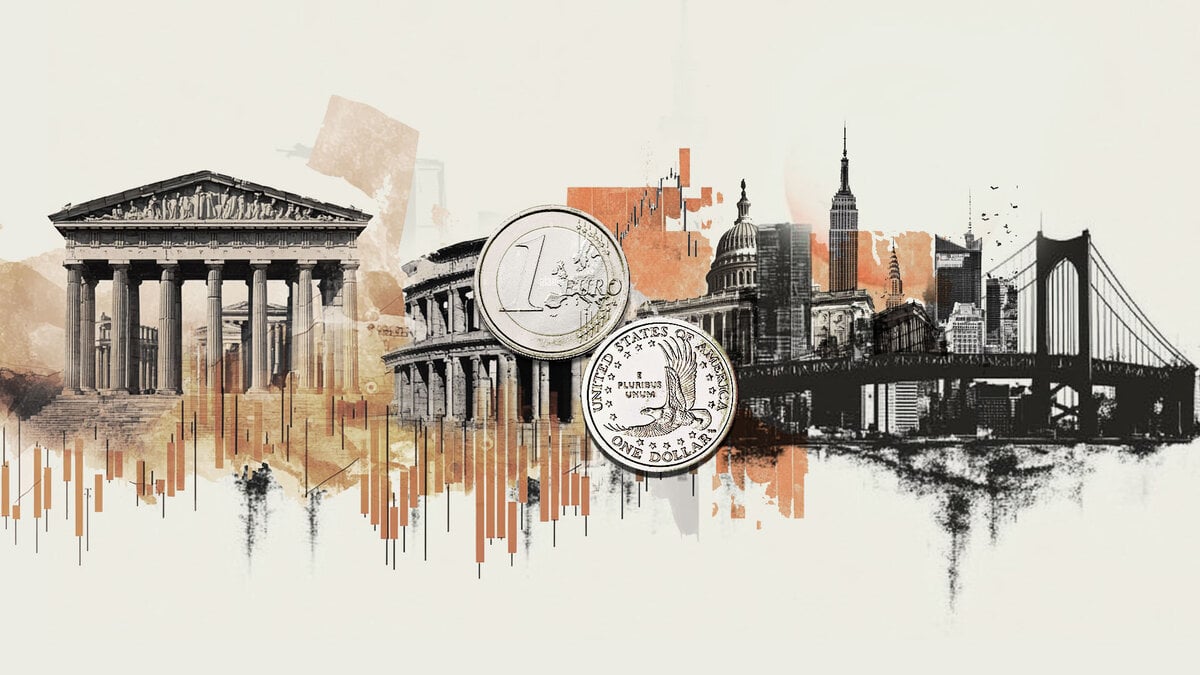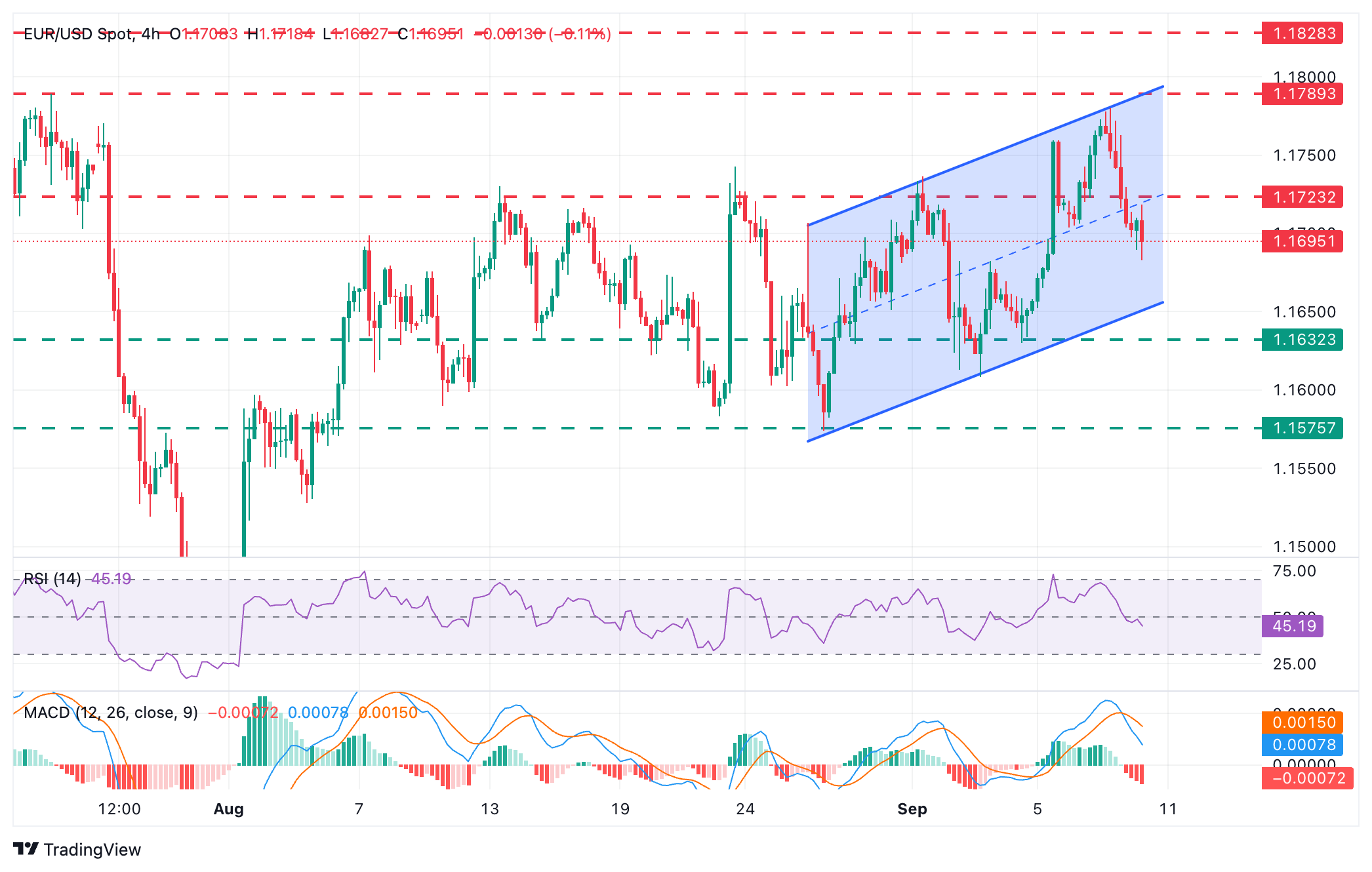Created
: 2025.09.10














![]() 2025.09.10 17:09
2025.09.10 17:09
The EUR/USD is testing levels below 1.1700 at the time of writing on Wednesday, following a reversal from multi-week highs near 1.1780 the previous day. Investors' concerns about the frictions between Poland and Russia have rattled a doleful market, with traders reluctant to take directional bets ahead of US inflation releases.
Earlier in the day, news reporting that Poland shot down drones, allegedly Russian, near its border with Belarus, has raised concerns about an extension of the conflict in Ukraine. The impact of the event has been muted so far, but fears of escalating frictions between Russia and North Atlantic Treaty Organization (NATO) members are likely to curb investors' appetite for risk and weigh on the Euro (EUR).
US inflation figures, with the Producer Prices Index (PPI) coming out later on the day and the Consumer Prices Index (CPI) due on Thursday, are likely to be the main market mover this week. With the Federal Reserve (Fed ) monetary policy meeting around the corner, inflation numbers are the last piece of the puzzle to assess the pace of the Fed's monetary easing cycle.
The weak US labour market, confirmed by the sharp downward revision of Nonfarm Payrolls figures, has practically confirmed a Fed rate cut in September, and at least another one before the end of the year, but hot inflation figures, stemming from higher tariffs on imports, might complicate the central bank's rate-setting efforts. Such a scenario would bring back stagflation concerns and might add negative pressure on the US Dollar (USD).
Before the Fed, the European Central Bank (ECB) is expected to keep its benchmark interest rate unchanged on Thursday. The main interest of the event will be on ECB President Christine Lagarde's press conference to see if the central bank has reached its terminal rate or there is still room for further monetary easing.
The table below shows the percentage change of Euro (EUR) against listed major currencies today. Euro was the strongest against the Canadian Dollar.
| USD | EUR | GBP | JPY | CAD | AUD | NZD | CHF | |
|---|---|---|---|---|---|---|---|---|
| USD | 0.10% | -0.02% | 0.13% | 0.07% | -0.16% | -0.22% | -0.01% | |
| EUR | -0.10% | -0.12% | -0.05% | -0.03% | -0.30% | -0.33% | -0.11% | |
| GBP | 0.02% | 0.12% | 0.12% | 0.10% | -0.17% | -0.20% | 0.05% | |
| JPY | -0.13% | 0.05% | -0.12% | 0.02% | -0.35% | -0.36% | 0.16% | |
| CAD | -0.07% | 0.03% | -0.10% | -0.02% | -0.29% | -0.33% | -0.05% | |
| AUD | 0.16% | 0.30% | 0.17% | 0.35% | 0.29% | -0.03% | 0.22% | |
| NZD | 0.22% | 0.33% | 0.20% | 0.36% | 0.33% | 0.03% | 0.41% | |
| CHF | 0.01% | 0.11% | -0.05% | -0.16% | 0.05% | -0.22% | -0.41% |
The heat map shows percentage changes of major currencies against each other. The base currency is picked from the left column, while the quote currency is picked from the top row. For example, if you pick the Euro from the left column and move along the horizontal line to the US Dollar, the percentage change displayed in the box will represent EUR (base)/USD (quote).

EUR/USD is looking weaker on Wednesday, following a reversal from the 1.1780 area on Tuesday. The immediate trend remains positive, although technical indicators have turned lower. The 4-hour Relative Strength Index (RSI) has plunged below the 50 level, and the Moving Average Convergence Divergence (MACD) crossed below the signal line, showing scope for further depreciation.
The 1.1700 round level is being pierced at the moment, with bears looking at the bottom of the near-term ascending channel, now at 1.1650, ahead of the September 4 low, near 1.1630. To the upside, the intra-day high at 1.1720 is likely to challenge bulls, ahead of the July 24 high near 1.1790, the last resistance area before the July 1 high at 1.1830.
The Euro is the currency for the 19 European Union countries that belong to the Eurozone. It is the second most heavily traded currency in the world behind the US Dollar. In 2022, it accounted for 31% of all foreign exchange transactions, with an average daily turnover of over $2.2 trillion a day. EUR/USD is the most heavily traded currency pair in the world, accounting for an estimated 30% off all transactions, followed by EUR/JPY (4%), EUR/GBP (3%) and EUR/AUD (2%).
The European Central Bank (ECB) in Frankfurt, Germany, is the reserve bank for the Eurozone. The ECB sets interest rates and manages monetary policy. The ECB's primary mandate is to maintain price stability, which means either controlling inflation or stimulating growth. Its primary tool is the raising or lowering of interest rates. Relatively high interest rates - or the expectation of higher rates - will usually benefit the Euro and vice versa. The ECB Governing Council makes monetary policy decisions at meetings held eight times a year. Decisions are made by heads of the Eurozone national banks and six permanent members, including the President of the ECB, Christine Lagarde.
Eurozone inflation data, measured by the Harmonized Index of Consumer Prices (HICP), is an important econometric for the Euro. If inflation rises more than expected, especially if above the ECB's 2% target, it obliges the ECB to raise interest rates to bring it back under control. Relatively high interest rates compared to its counterparts will usually benefit the Euro, as it makes the region more attractive as a place for global investors to park their money.
Data releases gauge the health of the economy and can impact on the Euro. Indicators such as GDP, Manufacturing and Services PMIs, employment, and consumer sentiment surveys can all influence the direction of the single currency. A strong economy is good for the Euro. Not only does it attract more foreign investment but it may encourage the ECB to put up interest rates, which will directly strengthen the Euro. Otherwise, if economic data is weak, the Euro is likely to fall. Economic data for the four largest economies in the euro area (Germany, France, Italy and Spain) are especially significant, as they account for 75% of the Eurozone's economy.
Another significant data release for the Euro is the Trade Balance. This indicator measures the difference between what a country earns from its exports and what it spends on imports over a given period. If a country produces highly sought after exports then its currency will gain in value purely from the extra demand created from foreign buyers seeking to purchase these goods. Therefore, a positive net Trade Balance strengthens a currency and vice versa for a negative balance.
![]()
Created
: 2025.09.10
![]()
Last updated
: 2025.09.10

FXStreet is a forex information website, delivering market analysis and news articles 24/7.
It features a number of articles contributed by well-known analysts, in addition to the ones by its editorial team.
Founded in 2000 by Francesc Riverola, a Spanish economist, it has grown to become a world-renowned information website.
We hope you find this article useful. Any comments or suggestions will be greatly appreciated.
We are also looking for writers with extensive experience in forex and crypto to join us.
please contact us at [email protected].
Disclaimer:
All information and content provided on this website is provided for informational purposes only and is not intended to solicit any investment. Although all efforts are made in order to ensure that the information is correct, no guarantee is provided for the accuracy of any content on this website. Any decision made shall be the responsibility of the investor and Myforex does not take any responsibility whatsoever regarding the use of any information provided herein.
The content provided on this website belongs to Myforex and, where stated, the relevant licensors. All rights are reserved by Myforex and the relevant licensors, and no content of this website, whether in full or in part, shall be copied or displayed elsewhere without the explicit written permission of the relevant copyright holder. If you wish to use any part of the content provided on this website, please ensure that you contact Myforex.
Myforex uses cookies to improve the convenience and functionality of this website. This website may include cookies not only by us but also by third parties (advertisers, log analysts, etc.) for the purpose of tracking the activities of users. Cookie policy